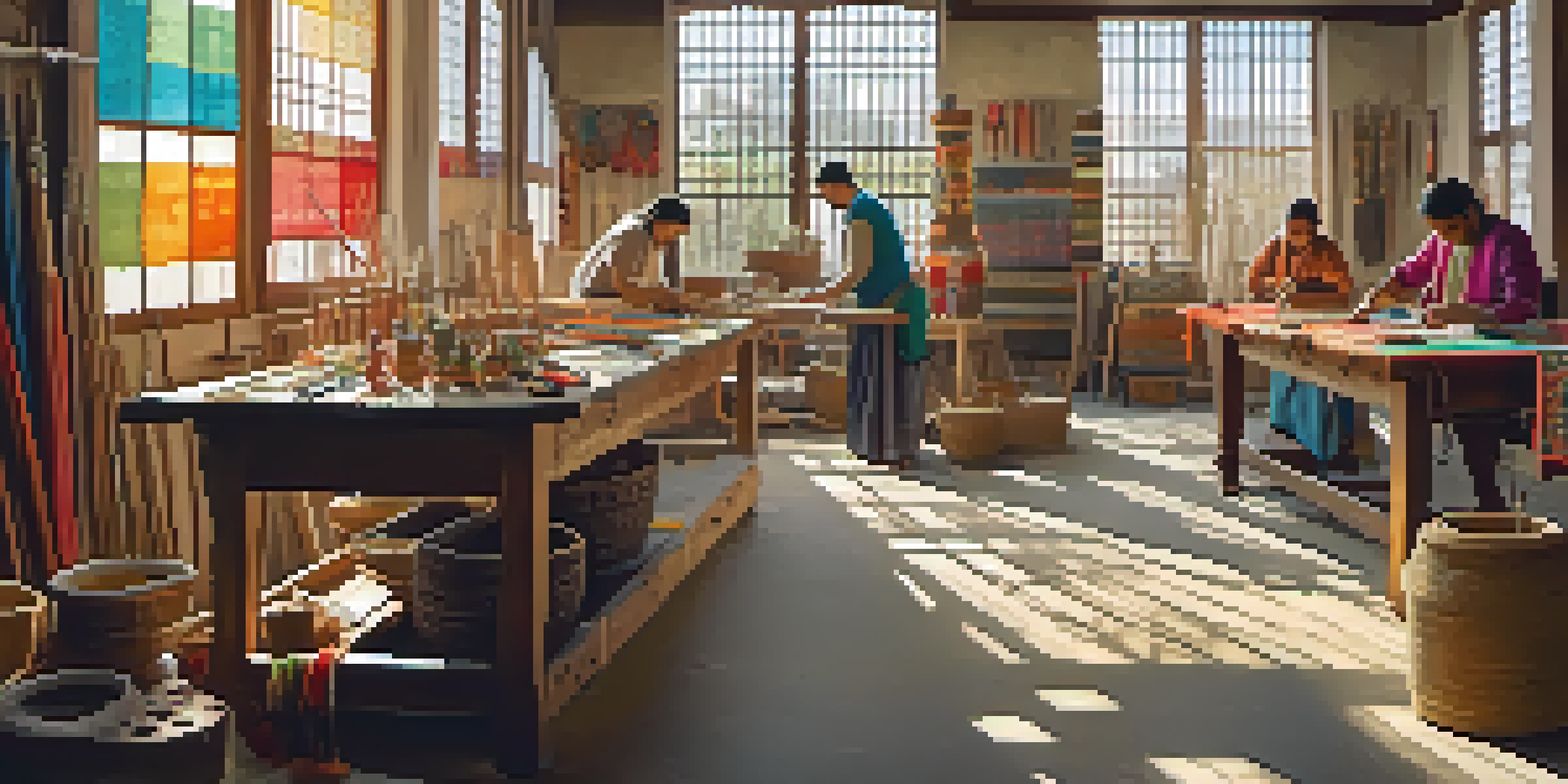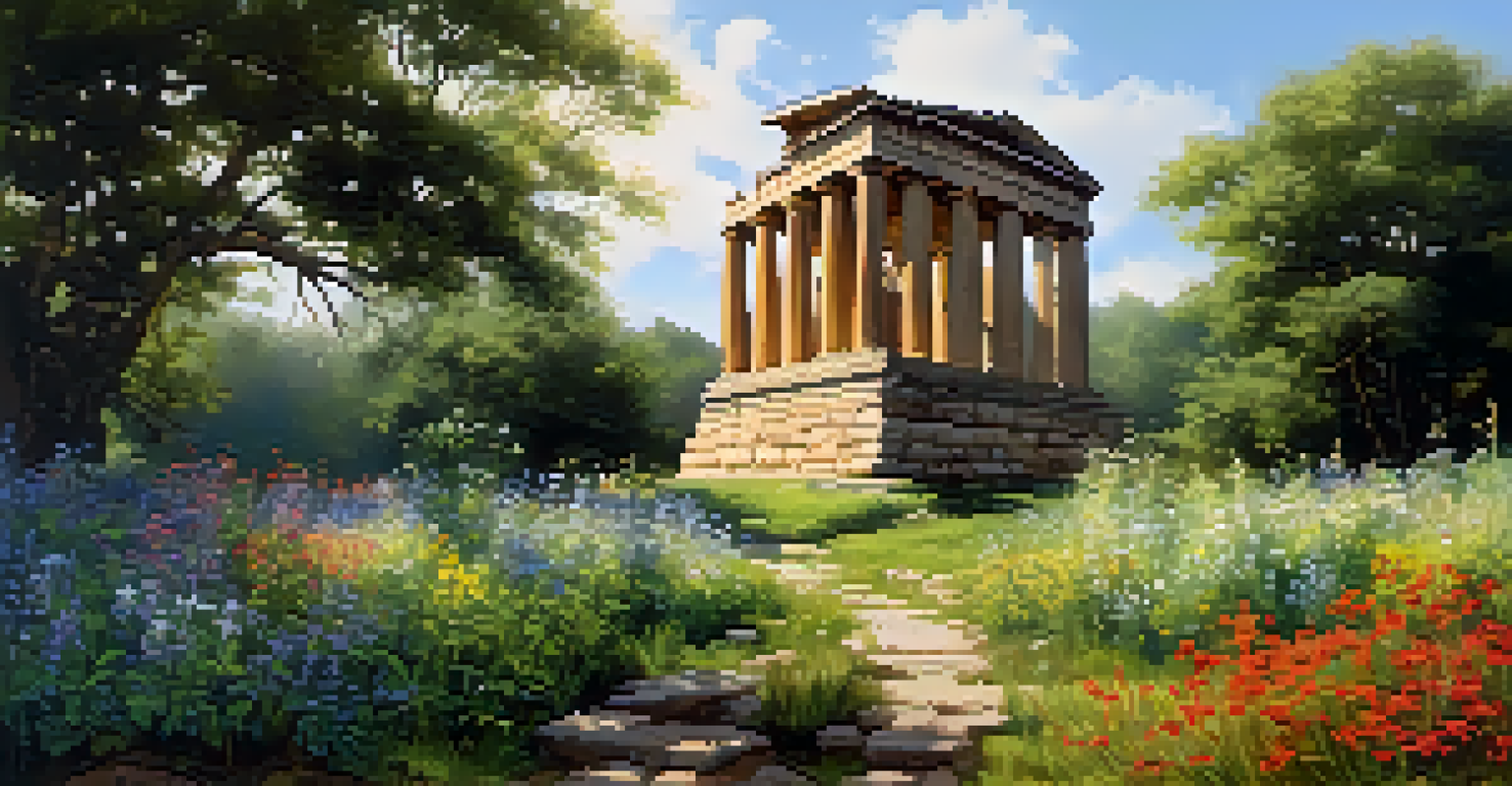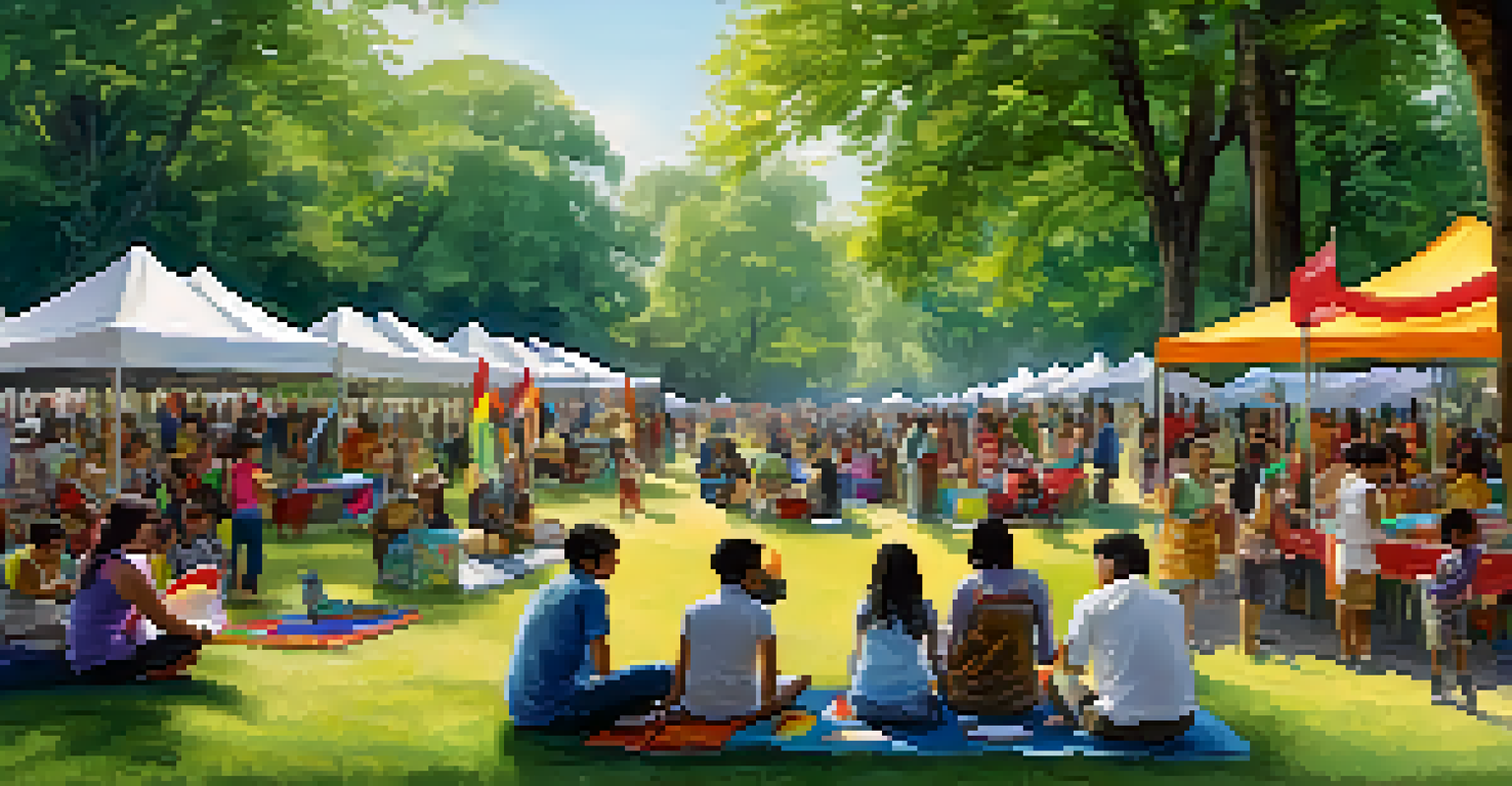Art and Cultural Heritage: Policy Implications and Support

Understanding Art and Cultural Heritage in Society
Art and cultural heritage encompass the expressions and traditions that define a community's identity. From ancient artifacts to contemporary artworks, these elements tell stories that connect us to our past. They shape our values, beliefs, and even our worldviews, making their preservation vital for future generations.
Cultural heritage is the legacy of physical artifacts and intangible attributes of a group or society that are inherited from past generations, maintained in the present, and bestowed for the benefit of future generations.
Moreover, cultural heritage is not just about the artifacts themselves; it's about the practices and knowledge surrounding them. For instance, traditional crafts often hold centuries of techniques and cultural significance. By understanding this broader definition, we can appreciate the depth and importance of what is at stake when we discuss policy implications.
In a rapidly globalizing world, maintaining a strong sense of cultural identity becomes increasingly challenging. As cultures blend and shift, the need for robust policies to safeguard these treasures is more important than ever. This brings us to the role of policy in supporting art and cultural heritage.
The Role of Policy in Cultural Heritage Preservation
Policies play a crucial role in the preservation and promotion of art and cultural heritage. They set the framework for how societies recognize, protect, and celebrate their cultural assets. For instance, government initiatives can provide funding for museums, support local artists, and create programs that educate the public about their cultural history.

Moreover, effective policies can help address the challenges posed by urbanization and commercialization. Without proper regulations, historic sites may be threatened by development, and traditional practices risk being overshadowed by mass-produced art. By implementing thoughtful policies, we ensure that cultural heritage is not only preserved but also integrated into modern life in meaningful ways.
Importance of Cultural Heritage
Art and cultural heritage define community identity and connect us to our past, making their preservation essential for future generations.
Additionally, international agreements, like UNESCO's conventions, highlight the importance of global cooperation in cultural heritage protection. These policies encourage nations to work together, recognizing that cultural treasures belong to humanity as a whole. This collaborative spirit is essential in fostering a shared commitment to preserving our diverse cultural landscapes.
Challenges Facing Art and Cultural Heritage Today
Despite the efforts in policy-making, art and cultural heritage face numerous challenges. Economic pressures often lead to budget cuts for cultural programs, forcing institutions to find alternative funding sources. This can result in reduced access to art and heritage sites for the general public, limiting their educational and cultural experiences.
The arts are the most beautiful of all lies; they are the most comforting and the most vital. We need the arts to help us understand our world and ourselves.
Additionally, globalization poses a double-edged sword. While it promotes cross-cultural exchanges, it can also lead to the homogenization of cultures, where unique traditions and practices may fade away. Local artisans and traditional craftspeople frequently struggle to compete with mass-produced goods, risking the loss of invaluable cultural expressions.
Climate change further complicates matters, threatening the physical preservation of cultural sites. Rising sea levels, extreme weather, and pollution can all damage or erase cultural heritage. Thus, addressing these challenges requires an integrated approach, combining policy, community engagement, and environmental considerations.
Community Engagement in Cultural Heritage Initiatives
Community engagement is vital for the success of cultural heritage initiatives. When local communities are involved in decision-making processes, they are more likely to support and sustain preservation efforts. This can be seen in grassroots movements that rally to protect local historic sites or promote traditional art forms, demonstrating the power of collective action.
Moreover, education plays a key role in fostering community spirit around cultural heritage. Workshops, exhibitions, and public events can raise awareness about the significance of local art and traditions. By engaging younger generations, we can ensure that cultural heritage is not only preserved but also passed down and revitalized.
Role of Policy in Preservation
Effective policies are crucial for recognizing, protecting, and celebrating cultural assets, ensuring they are integrated into modern life.
Collaborative projects between artists, cultural institutions, and community members can also yield innovative solutions. For example, artists can reinterpret traditional practices, making them relevant to contemporary audiences. This not only preserves the heritage but also enriches the community's cultural tapestry.
The Importance of Funding and Resources
Sufficient funding and resources are essential for the effective preservation of art and cultural heritage. Without financial support, many projects may struggle to get off the ground or maintain operations. Public funding, grants, and private donations can make a significant difference in ensuring that cultural institutions thrive.
Additionally, partnerships with businesses and philanthropic organizations can provide innovative funding solutions. For example, sponsorships for exhibitions or art festivals can alleviate some financial burdens while fostering a sense of community involvement. This collaborative spirit not only brings in resources but also generates public interest and engagement.
Moreover, investing in digital technologies can expand access to art and cultural heritage. Virtual exhibitions, online archives, and digital storytelling can reach wider audiences, especially those who may not have the opportunity to visit physical sites. By embracing technology, we can enhance our understanding and appreciation of cultural heritage.
Policy Recommendations for Strengthening Cultural Heritage
To effectively support art and cultural heritage, policymakers should prioritize inclusive frameworks that represent diverse voices. This includes engaging with indigenous communities, underrepresented artists, and cultural practitioners. By ensuring that various perspectives are included, we can create policies that resonate with the broader public.
Furthermore, integrating cultural heritage education into school curriculums can foster appreciation from a young age. Teaching students about their local heritage not only enriches their educational experience but also instills a sense of pride and responsibility towards preservation. This long-term investment in cultural awareness is crucial for sustainable heritage practices.
Community Engagement is Key
Involving local communities in cultural heritage initiatives fosters support and sustainability for preservation efforts.
Lastly, policies should promote interdisciplinary approaches that link culture with areas like tourism, urban planning, and environmental sustainability. By recognizing the interconnectedness of these fields, we can create comprehensive strategies that benefit not only the cultural sector but society as a whole.
Conclusion: A Collective Responsibility Towards Heritage
In conclusion, the preservation of art and cultural heritage is a collective responsibility that transcends individual efforts. It requires a collaborative approach that involves policymakers, communities, artists, and the public. Each stakeholder plays a crucial role in ensuring that cultural treasures are safeguarded for future generations.
As we navigate the complexities of modern society, recognizing the value of our cultural heritage becomes increasingly important. It enriches our lives, fosters understanding, and connects us to our history. By supporting effective policies and engaging in community initiatives, we can contribute to a vibrant cultural landscape.

Ultimately, the future of art and cultural heritage depends on our commitment to preservation and celebration. Let us work together to create policies that not only protect but also promote the rich tapestry of human expression that defines us all.